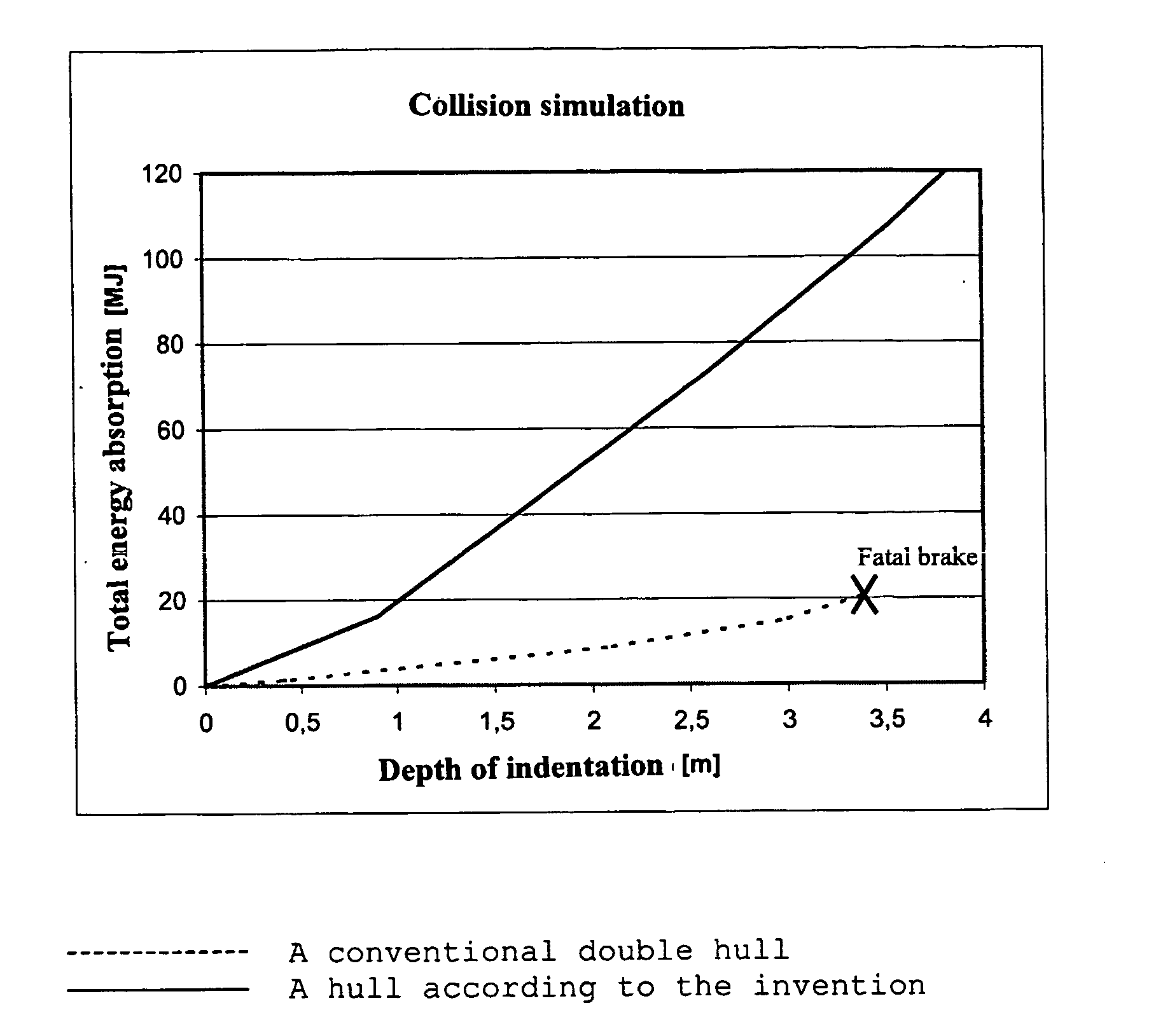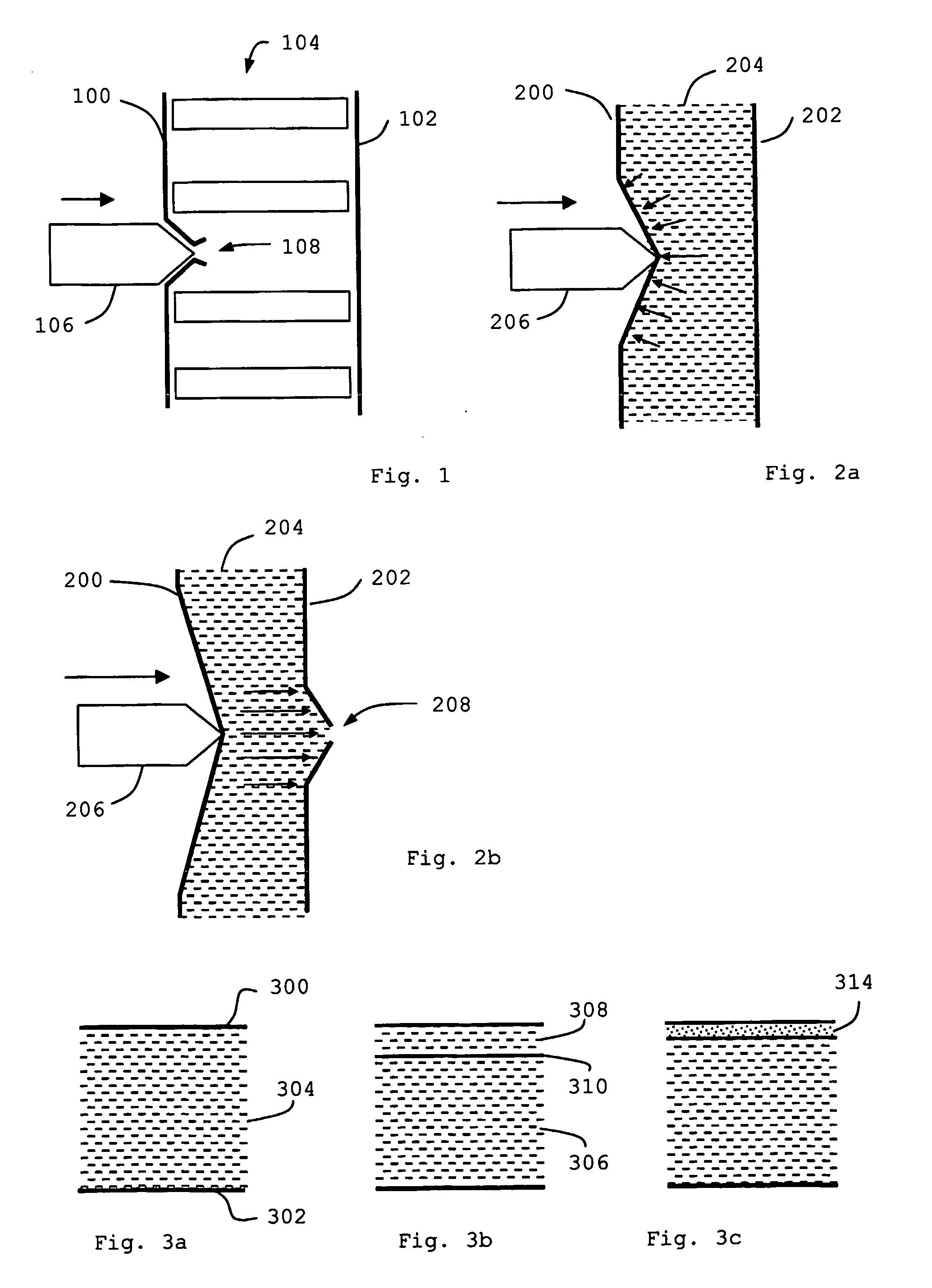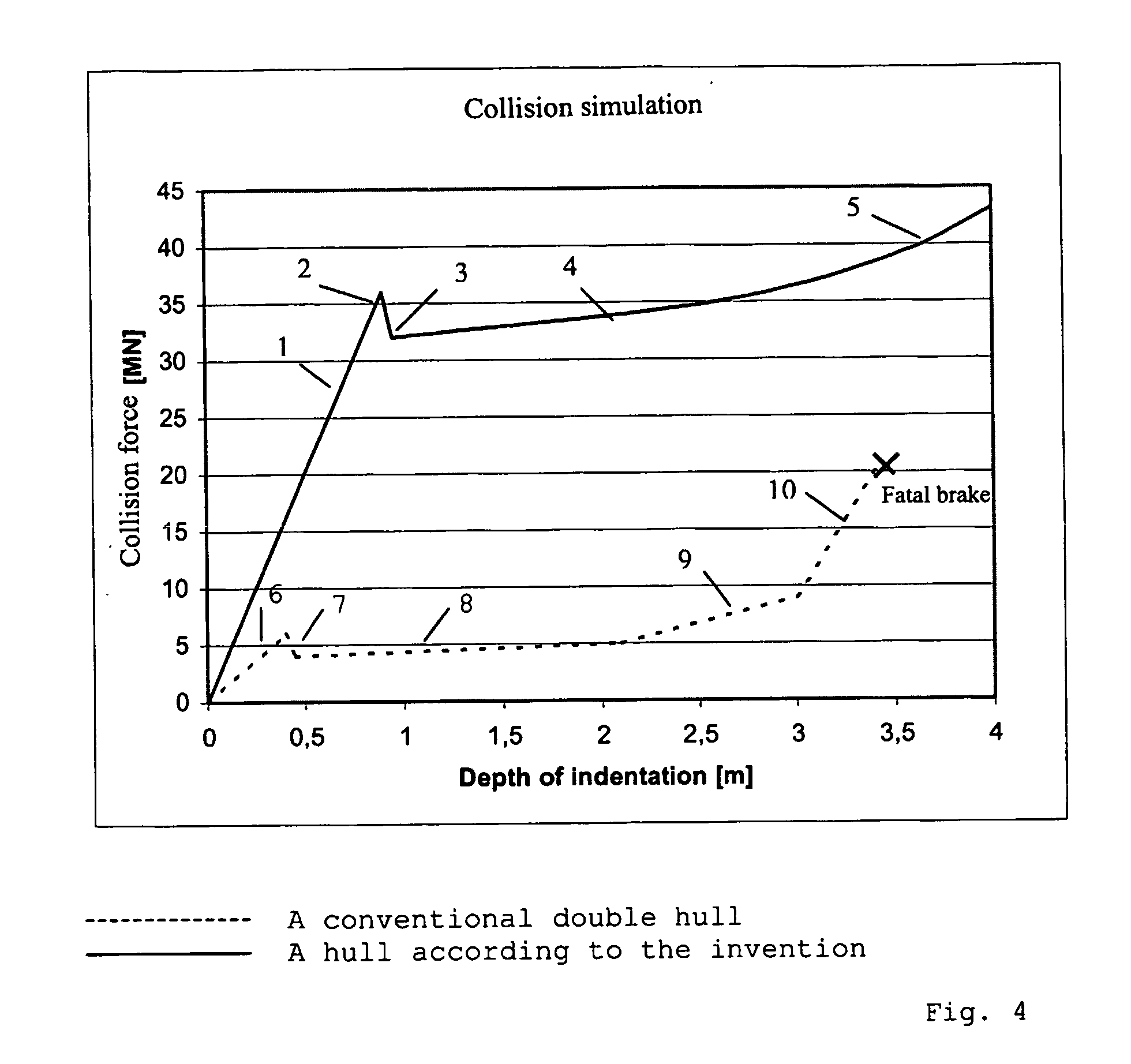Ship Hull and a Method of Manufacturing Such a Hull
- Summary
- Abstract
- Description
- Claims
- Application Information
AI Technical Summary
Benefits of technology
Problems solved by technology
Method used
Image
Examples
example
[0081] A PVC-foam having a density of 100 kg / m3 can be loaded by 280 tons per m2 before deformation occurs. This is the case without any surface layer on the top surface of the cellular plastic material. A PVC-foam having a density of 200 kg / m3 can be loaded by almost 500 tons per m2 before deformation occurs.
[0082] When deformation occurs, an outer layer is initially deformed, and in order to further deform the cellular plastic, the compressive force must be more than doubled. This fact combined with a hard surface layer on the cellular plastic surface which distributes a compressive force over a larger area, results in that the energy absorption capability of the structure according to the invention is extremely high.
[0083] When using expanded polypropylene or expanded polyethene, a further advantage is obtained in that, after compression, the cellular plastic material almost recovers its original thickness, however somewhat depending on the nature of the damage.
[0084] Yet anot...
PUM
| Property | Measurement | Unit |
|---|---|---|
| Thickness | aaaaa | aaaaa |
| Thickness | aaaaa | aaaaa |
| Thickness | aaaaa | aaaaa |
Abstract
Description
Claims
Application Information
 Login to View More
Login to View More - R&D
- Intellectual Property
- Life Sciences
- Materials
- Tech Scout
- Unparalleled Data Quality
- Higher Quality Content
- 60% Fewer Hallucinations
Browse by: Latest US Patents, China's latest patents, Technical Efficacy Thesaurus, Application Domain, Technology Topic, Popular Technical Reports.
© 2025 PatSnap. All rights reserved.Legal|Privacy policy|Modern Slavery Act Transparency Statement|Sitemap|About US| Contact US: help@patsnap.com



